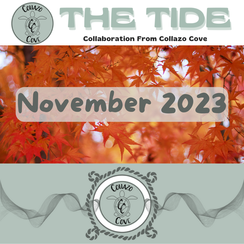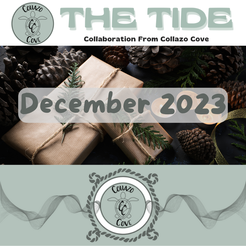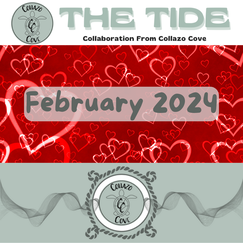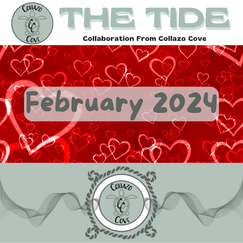|
With the recent success of India’s lunar landing and interesting articles sent to my inbox by NASA, I wanted to share some relevant STEM lessons my students loved! In their article, “Why Bring Mars Samples Down To Earth?”, NASA explains the purpose behind their Mars Sample Return mission. Moon Rock Challenge This reminded me of the Moon Rock Challenge mission I created for my students following the news about China’s rover landing on the moon's dark side. (Update on mission HERE.) In the challenge, student engineers must build a device to grab moon rocks (in our case, we used the LEGO WEDO grabber build but you could use recyclable materials instead of robotics). The main element of this challenge is that the student grabbing the rocks (packing peanuts) is behind a barrier and can’t see them. They must communicate with another engineer who has the visuals! They must work together to gather as many rocks (could be the Moon or Mars!) for scientists to bring back for analysis. I built collection vessels with recycled large cardboard tubes, but you could use solo cups or any other easy-to-find cylinder. We talked a lot about how space scientists must communicate effectively with the devices they send to the Moon or Mars in order to successfully complete the task. Moon Rover Challenge This was a lesson (Slides) I created for a professional development session with elementary educators. My intent was for them to learn to use the LEGO WEDO 2.0 kits as well as learn how to integrate STEM into non-fiction literacy, science content, math measurement, and the effective use of technology apps. You could copy and edit these slides to include different robots like LEGO Spike, BeeBots, Dash, etc. if you don’t have WEDO 2.0 (which has sadly been discontinued). Or you could have the engineers make it out of recycled materials, not using robots at all! Do you have a favorite Space STEM activity? I'd love to hear about it! #BetterTogether
0 Comments
I don’t know about you, but I love when a new Edutopia newsletter pops up in my inbox. The one I just received includes an article about six evidence-backed tips for scaffolding student learning.
As I was reading the advice, I couldn’t help but think about the perfect tie-in to how we scaffold learning through STEM activities. So here are my STEM takes on the six they discuss in their article.
#1 Clarity
The article describes how you should make sure your instructions and materials are designed to optimize student understanding and learning. When we introduce an engineering activity to students this is so important. Whether we are starting with a foundational picture book, relevant current event, or other hooks, we need to make sure we are walking the students through the process and actions we are expecting, and clearing up any questions they may have prior to beginning. This allows them to see the big picture, sets the tone, and decreases negative behaviors that often come when students are confused or anxious. I always use my guiding slide deck with the same engineering design process (EDP) image to provide clarity and better student understanding. Here’s an example: #2 Build Background Knowledge For me, this is where the IMAGINE step in the EDP is crucial. In addition to children imagining how they will solve a problem, I use this step to show pictures or an effective video related to the challenge to promote discussions and provide that crucial background knowledge that many students may not have. For example, when engineering “boats” for the Who Sank the Boat lesson, many students may not have first-hand experience with what different boats look like. So I share the images below and we talk about the materials, shapes, designs, and purposes of the various boats. This provides at least a small bit of background knowledge prior to the actual challenge. Background knowledge can also be triggered through discussions the class has while reading a foundational picture book!
#3 Be Multi-Modal
Ah, yes! STEM integration’s superpower! By nature, engineering and hands-on science, math, and technology learning are multi-modal. Children are asked to listen to a story, watch a video, or view a demonstration of a phenomenon. They are then tasked with drawing out their plans to solve a problem. Then comes the crucial building, manipulating, experimenting, and/or crafting. And throughout that amazing process, they are continually communicating with their partner or team, sharing results at the end, and in many other ways stating what they have learned. STEM is naturally multi-modal!
#4 Use Graphic Organizers and Anchor Charts
Whether in the regular classroom, the STEM lab, or the media center maker space, graphic organizers and anchor charts provide students with just that…an anchor for all the learning taking place. The Edutopia article states that “In the early stages of learning—as students are grappling with unfamiliar information—it’s helpful to supply prompts, hints, or even partially completed anchor charts and graphic organizers to make learning more effective” In my opinion, when conducting STEM activities, these anchor charts should first be filled with student discoveries, ideas, and conclusions. Then, through class discussion, if misconceptions related to content need to be clarified, additional information can be added. We need to be careful to allow the students to work through failure without the crutch of constant hints or prompts about what WE think they should do. As teachers this is hard; to step back even when we know they are making a mistake or their build won’t work. But this is where the best learning occurs, and building an anchor chart throughout the activity can support that.
#5 Use Pre-Lesson Activities
Although the article focuses on the more traditional content application of providing high-level quiz questions prior to the learning activity, my favorite pre-lesson activity when integrating STEM is reading a relevant well-written picture book, no matter what age the students are (high school students still love picture books!). For great collections of picture books that are fantastic for STEM integration check out my constantly growing Pinterest Board HERE.
#6 Ask Meta-Cognitive Questions
One way I’ve found to keep myself from “helping” students too much during the engineering design process is to ask questions that help them develop their metacognition. Questions/prompts like:
What other ways do you help scaffold STEM activities for your students? I’d love to hear about them! #BetterTogether
As we race into the new school year, it is crucial to recognize and consider the importance and impact of STEM (Science, Technology, Engineering, Math) education for ALL children. The value is not merely limited to producing future scientists or engineers, not every child’s passion is in these areas. The importance is to foster critical thinking, problem-solving, creativity, and innovation—skills that are relevant in every aspect of our lives today. And don’t even get me started on how it levels the playing field and provides leadership opportunities for children who struggle with traditional academics! That will be a future post! STEM education is the key that can unlock potential in every child. It cultivates a generation of problem solvers, innovators, and critical thinkers, who will collaboratively lead society toward a more promising and productive future. Especially in elementary education, STEM introduces a holistic way of learning. It allows students to connect their lessons with real-world scenarios, making education exciting, relevant, and fun. Those of you who know me or have heard me speak, know that to me, relevancy HAS to be a priority! By integrating the Engineering Design Process often, students build resilience and adaptability, learning that it’s okay to fail and what’s important is to keep trying. The beauty of STEM learning is its inclusivity. Regardless of their background, every child deserves the chance to explore the magic of science, the creativity in technology, the innovation in engineering, and the logic in mathematics. It empowers them to understand the world and inspires them to change it. However, the challenge is to keep these lessons engaging. Time is a precious resource and as an educator, we want every minute to count! Incorporating STEM into our teaching can seem daunting. Luckily, STEM teaching resources and ideas are abundant. (See my previous posts!) Many of you know how much I value my Twitter (X) PLN for this very reason! So many STEM-passionate educators are sharing fun and creative ways to integrate these subjects into our curriculum every day. As I continue to share STEM resources that have worked well with the thousands of students with whom I’ve worked, please remember, STEM education provides an invaluable foundation for our children’s future.
It’s not just about nurturing the next Albert Einstein or Mae Jemison, it’s about empowering ALL children to be creative, confident, and capable problem solvers. By incorporating STEM into your teaching, you are setting your students on a path to success, no matter where their journey leads. What are your thoughts? The first week of school is a great time to integrate STEM activities that set the stage for the expectations you have throughout the year related to teamwork, communication, collaboration, failure, empathy, and all those other crucial skills that make STEM such an inviting way to learn. Below are 3 suggestions for very BASIC STEM activities I have done using simple materials and pre-made slides that are ready to go! I hope you’ll consider including one or more in your lesson plans with your new students! Click on each title for a link to the slides, and as always, feel free to make a copy and tweak it however best fits your situation. Activity 1: Teamwork Challenge This is an oldie but goodie and I use it every year for the very first lesson. I want to ensure that my students understand that teamwork is going to be one of our most valued skills during the year. Materials: 10 plastic cups per team (4 students/team), rubber bands and string/yarn The directions/procedures I use are in the notes under each slide. Activity 2: Saving Sam This is another oldie but goodie that my digital integration team and I use to introduce teachers and students to the engineering design process in a simple non-threatening way. Whereas Activity #1 relied on larger group teamwork, this activity allows students to practice being a good partner. There are notes at the bottom of some of the slides. A picture of the setup and further information can be found HERE. Materials: clear short plastic cups, Gummy Savers (NOT the hard lifesaver candy), Gummy Worms (Pro tip: Don’t get the sour kind with the sugar coating), paper clips Activity 3: Bridge Building Challenge Simpler to conduct than many bridge-building activities, this activity will help your students see that not everything is easy. Failure, perseverance, and critical thinking are going to be important in your room this year. Materials: craft sticks, pennies (or other weights) The weights are to be used as part of the bridge, not as a load it must hold. Students can work with partners or individually. The goal of this activity is to design and build the longest bridge using only the provided materials. This will encourage problem-solving, critical thinking, and creativity. After everyone finishes, have them measure their bridges and do a gallery walk to see the different designs. Then make sure you save a few minutes for the ending discussion questions! Integrating STEM involves more than giving kids materials and a challenge to solve. Often social-emotional skills like collaboration, sharing, teamwork, effectively communicating, and staying positive through failure/ difficulty take a while to develop. Consistently modeling expectations and providing continual practice is key, and starting during the first few days sets the tone for the remainder of the year!
I’d love to hear about your favorite beginning STEM activity in the comments! #BetterTogether |
Kim CollazoSTEM Advocate and Picture Book Author Archives
April 2024
Categories
All
|























 RSS Feed
RSS Feed